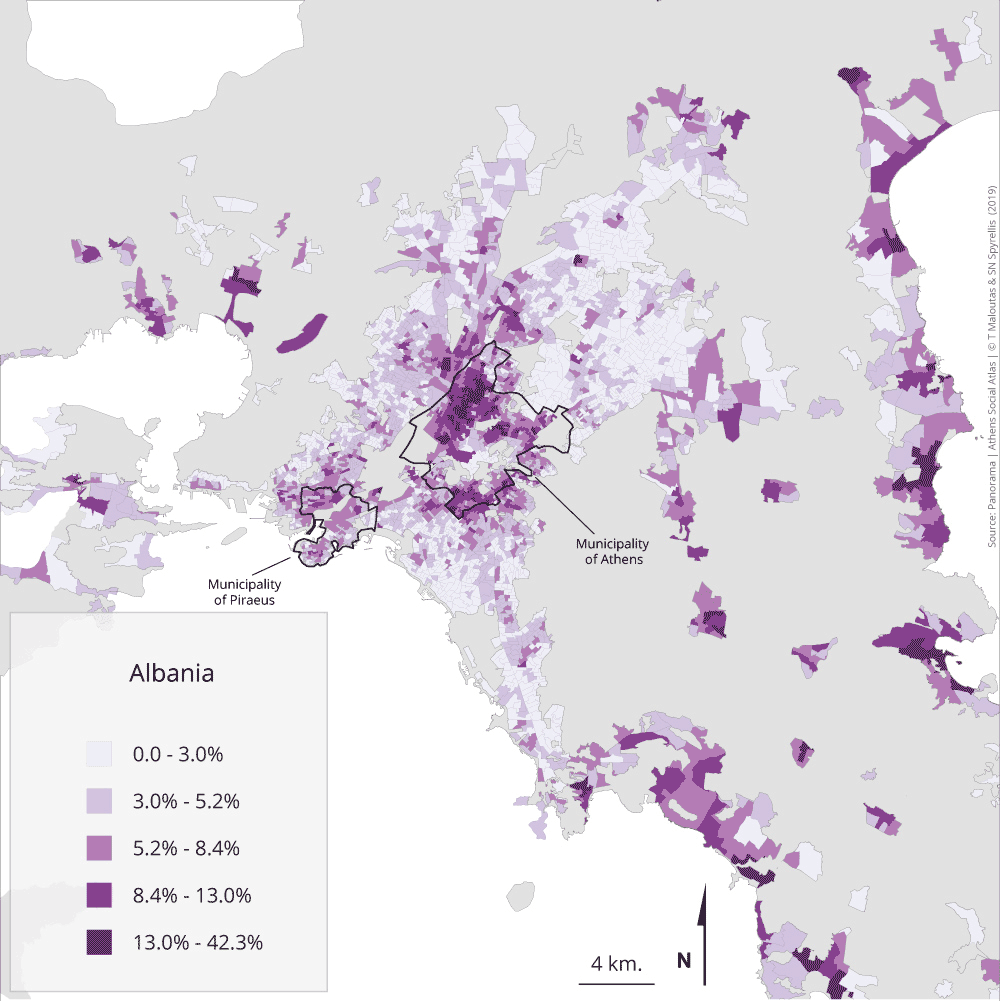Population Distribution by Citizenship Map in Attica, Greece


David Chen
Data Visualization Specialist
David Chen is an expert in transforming complex geographic datasets into compelling visual narratives. He combines his background in computer science ...
Geographic Analysis
What This Map Shows
The population distribution by citizenship other than Greek in Attica, Greece, in 2011 provides a revealing snapshot of the demographic landscape in this crucial region. This map highlights the various nationalities residing in Attica, showcasing not just where these populations are concentrated, but also the broader implications of such distributions in terms of social integration, urban planning, and economic dynamics.
Deep Dive into Population Distribution
Population distribution is a critical aspect of understanding urban dynamics and social structures. In Attica, which is home to Athens, the capital city of Greece, the demographics are particularly diverse due to its status as a cultural and economic hub. The map presents a clear delineation of various citizenships, reflecting the rich tapestry of communities that have settled in this region. Interestingly, the foreign population in Attica has historically been influenced by waves of immigration resulting from economic opportunities, political instability, and globalization. In 2011, the map indicates a significant presence of immigrants from countries such as Albania, Bulgaria, Pakistan, and Georgia, among others. These groups have contributed to both the labor market and cultural diversity of the area.
What's fascinating is how these patterns of settlement align with urban infrastructure and social services. For instance, areas with a high concentration of Albanian immigrants often coincide with specific neighborhoods in northern Attica, where they have established vibrant communities that maintain their cultural identity while also integrating into Greek society.
Moreover, the economic contributions of these populations cannot be understated. Many immigrants fill essential roles in sectors such as construction, agriculture, and services, driving economic growth in Attica. However, this also raises questions about labor rights and social equity, highlighting the need for policies that support fair treatment of all workers, regardless of citizenship status.
Regional Analysis
When examining the map's regional breakdown, distinct patterns emerge. The northern suburbs of Athens, such as Kifisia and Marousi, show a notable presence of immigrants from Eastern European countries, particularly Bulgaria and Romania. This demographic shift has been driven by both geographic proximity and historical ties, making these areas popular for migrants seeking work.
Conversely, neighborhoods in the central and southern parts of Athens, like Exarchia and Kallithea, feature a more diverse mix of nationalities, including larger communities from countries such as Pakistan and Egypt. These areas often serve as initial points of settlement for new immigrants due to their affordability and accessibility to urban amenities.
Interestingly, the map also reveals stark contrasts in the distribution of citizenships, with certain areas exhibiting high concentrations of specific nationalities. This variation is indicative of both historical migration patterns and current socio-economic conditions. For example, areas with a high percentage of Georgian immigrants may reflect historical migration patterns tied to economic opportunities in the late 20th century.
Significance and Impact
Understanding population distribution in Attica is essential for multiple reasons. First, it sheds light on the social fabric of the region, illustrating how diverse communities coexist and contribute to the cultural richness of Athens. However, it also highlights challenges related to integration, resource allocation, and social equity.
As we look towards the future, the implications of these demographic trends are profound. With economic pressures and global migration patterns evolving, Attica is likely to see shifts in its population dynamics. This may lead to increased demands for housing, education, and public services, necessitating proactive urban planning and policies that promote inclusivity.
In conclusion, the 2011 population distribution map serves not just as a historical record but as a vital tool for understanding the ongoing evolution of Attica's demographics. It invites us to consider not only who lives in this vibrant region but also how their presence shapes the socio-economic landscape of Greece as a whole.
Visualization Details
- Published
- September 18, 2025
- Views
- 78
Comments
Loading comments...